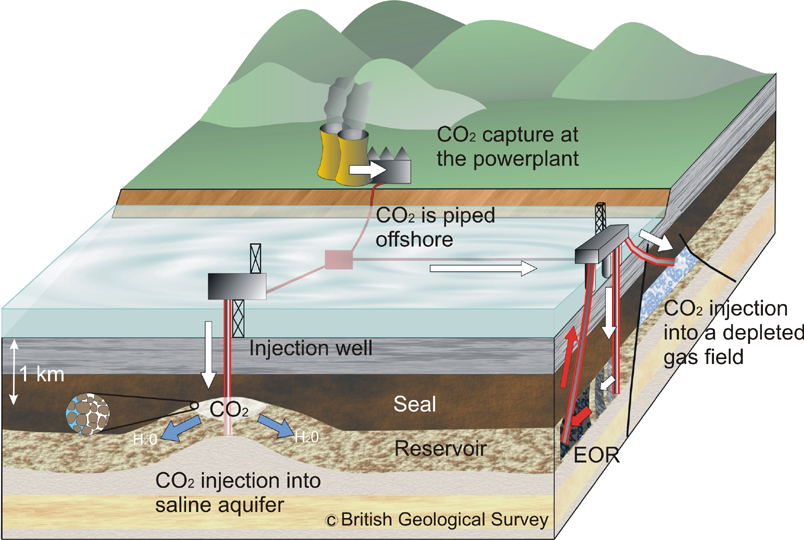Seismic Monitoring of CO2 Storage
Main content
Project description
Background/motivation:
Storage of CO2 is considered to be very important for the mitigation of climate change related issues. Therefore a lot of money is being put into CO2 related research. This research is related to injecting the CO2 in a safe manner as well as to monitoring where exactly the CO2 is located in the subsurface. This latter point is very important as the storage should be reliable and no leakage, either near the wells or through the overburden should occur. Monitoring of the CO2 over an extended period of time is therefore essential.
Scientific Problem:
This monitoring is typically done using seismic methods. For this seismic surveys repeatedly have to be shot over the reservoir and the seismic data has to be processed. This processing requires considerable computational effort and it would be attractive if the processing time could be reduced significantly. Moreover, even though existing processing methods are quite sophisticated, there is still a lot of room for improvement. This improvement is therefore could be important for the reliable monitoring of CO2 storage, especially if the overburden is complicated.
Work:
The subsurface properties determined from seismics are, in first instance, the seismic velocities. These seismic velocities first are determined on a very large scale using seismic tomography (also called Migration velocity analysis). The details of the velocity models are then determined using either pre-stack depth migration or full waveform inversion. Full waveform inversion may be seen as an extension of the pre-stack depth migration. Both methods however are very time consuming. The main goal of this thesis is to speed up existing imaging and waveform inversion algorithms. For this two different but related tools are used: ray tracing on a GPU, which is faster than ray tracing on a CPU, as well as efficient inversion algorithms that use the improved ray tracing. If time allows, the improved algorithm
will be applied to real seismic data.
There is a possibility for this project to be done by one or two master students.
Proposed course plan during the master's degree (60 ECTS):
GEOV274, GEOV277, SDG207, MAT160, GEOV265, GEOV302
Prerequisites:
UiB Geophysics Bachelor (math direction) with an interest in programming.
